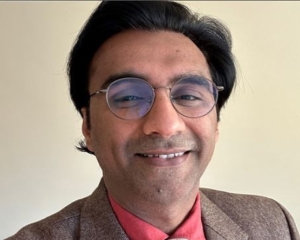Over the past three decades, the Communist parties in Uttar Pradesh have experienced a gradual decline, akin to political exile, as the landscape of the state has shifted towards saffron dominance.
Once boasting strongholds in revered religious cities like Ayodhya and Kashi, which provided a political impetus and ‘seed politico capital’ to the Bharatiya Janata Party, the Communists now find themselves relegated to the sidelines of the political landscape.
In their heydays, Communist flags flew high even in religious centres such as Ayodhya and Kashi, with notable victories that of Satya Narayan Singh of the Communist Party of India (Marxist) from Varanasi Lok Sabha seat in 1967 and Mitrasen Yadav from Ayodhya.
The movement, which had its presence in the UP assembly till 1974, when it won 16 seats, won one to four seats till 1996. Thereafter, the Left movement in the state was marginalised, with none of its members entering the portals of the Vidhan Sabha since 2002.
The political narrative began to change with the rise of caste-based politics, followed by the BJP’s Ram Janmabhoomi agitation in 1989, which polarised voters along communal lines and diverted supporters away from the Left parties.
A political analyst said that the advent of the politics of caste and religion in the 1990s pushed the Left ideology to the sidelines. “It is not as if the Left parties do not have their organisation in the state. In almost 65 districts, the Communist Party of India has its organisational units but they are struggling because of a dearth of resources. The same is the condition of other Leftist parties,” he added.
The younger generation is less acquainted with the ideological struggles of the Left, leading to a further erosion of their voter base,” noted political analysts, highlighting the generational shift in political ideologies.
Dr Girish, a senior leader of the CPI, attributed the Left’s decline to the emergence of caste-driven parties and the communal wave spearheaded by the BJP. Despite their advocacy for labourers, workers and the poor, the Left struggled to compete in elections due to limited funding and shifting voter allegiances.
Since 1991, no candidate from CPI or CPI (M) has been elected to the Lok Sabha from UP, marking a significant downturn from their previous electoral successes. Even in traditional strongholds like Kanpur, where Left wing labour leader SM Banerjee once held sway and won Lok Sabha election four times, the tide has turned, with the rise of saffron politics overpowering their influence.
In 1977, Manohar Lal of Janata Party stopped Banerjee’s victory march but in 1989, Suhashini Ali of CPI (M) won the Lok Sabha election from Kanpur. In 1967 Satya Narayan Singh of CPI (M) won election from Varanasi and the same year CPI’s Jageshwar Yadav had won from Banda.
Ghazipur and Ghosi area were Left bastions. CPI’s Jaibahadur Singh was elected MP from Ghosi in 1962 and 1967. In the next election, Jharkhande Rai (CPI) won the election but lost it in 1977. In 1989, Jharkhande Rai again unfurled the Left flag from there.
In neighbouring Ghazipur, Sarju Pandey won in 1967. The Left party won election from there in 1971 and 1991. Vishwanath Shastri again put the seat in the bag of the CPI.
Mitrasen Yadav from Faizabad and Jharkhande Rai from Ghosi also became MPs in 1989.
The Ram Janmabhoomi movement dealt a severe blow to socialist and communist parties, with many of their erstwhile supporters gravitating towards the Congress, Samajwadi Party, and ultimately the BJP.
As the Left grapples with extinction in Uttar Pradesh, its once-Red strongholds have now been saffronised, symbolising a significant shift in the state’s political landscape. Despite sporadic attempts to contest elections and maintain relevance, the Left's presence continues to fade amidst the resurgent saffron wave sweeping across the state.























